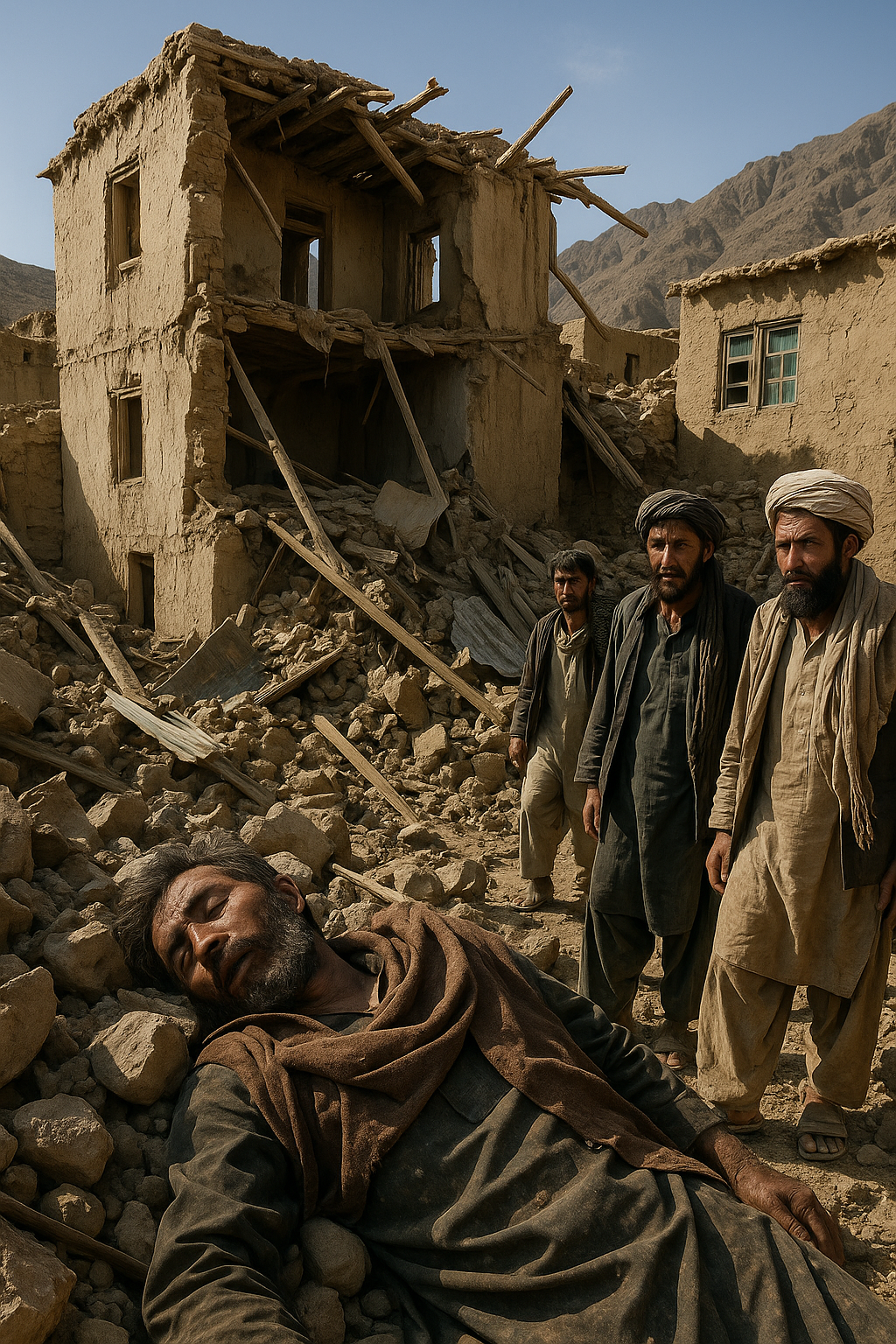Afghanistan Earthquake Tragedy: Over 800 Dead, Rescue Operations in Disarray
KUNAR / NANGARHAR: Afghanistan was struck by yet another disaster on the night of August 31, 2025, when a 6.0-magnitude earthquake shook the eastern provinces near Jalalabad, flattening villages, cutting off entire districts, and plunging the country into grief. With over 800 people confirmed dead and more than 2,800 injured, this is now being called one of the deadliest quakes in Afghanistan’s recent history.
Casualties Mounting by the Hour
The earthquake struck suddenly just before midnight, collapsing homes while families slept inside. In Kunar province, entire villages were reduced to rubble, leaving hundreds dead. In Nangarhar and Laghman, dozens of communities reported similar destruction, with hospitals quickly overwhelmed. Officials warn the death toll could rise further as many victims remain trapped under debris and rescuers struggle to reach remote valleys.
Villages Wiped Out Overnight
For countless Afghan families, life changed within seconds. Houses made of mud and stone, typical of Afghanistan’s rural areas, stood no chance against the tremor’s shallow shockwave. Survivors described scenes of chaos — children screaming in the dark, livestock crushed under collapsed barns, and entire households buried together. Landslides triggered by the quake blocked already fragile mountain roads, forcing rescuers to trek for hours on foot to reach stranded villages.
One local elder in Kunar described the night as “the longest in living memory,” saying entire families were lost in his village, with no survivors in some households.
Rescue Efforts Struggle Against Terrain
The Afghan military and emergency teams scrambled to respond, deploying 40 helicopters to evacuate the critically injured. Rescue teams dug through debris using limited tools, while neighbors joined hands to search for loved ones. But the challenges are immense: rough mountain terrain, blocked roads, and a lack of heavy machinery have slowed progress.
Medical facilities in Jalalabad and Kabul are overflowing, with corridors filled with patients. Doctors face a severe shortage of surgical equipment, anesthetics, and trauma care supplies. International aid organizations warn that unless immediate assistance arrives, the injured could face life-threatening complications.
Humanitarian Crisis Deepens
This earthquake comes at a time when Afghanistan is already struggling under a dire humanitarian crisis. Years of conflict, floods, droughts, and reduced international aid have left millions vulnerable. Food insecurity is at record highs, displacement continues, and health systems are fragile.
Now, thousands of newly homeless families are sleeping in the open without shelter, food, or clean drinking water. Relief organizations are rushing to provide tents, blankets, and medical kits, but the demand far exceeds supply. Aid workers fear disease outbreaks in makeshift camps if urgent sanitation measures are not taken.
Women and Children Among the Worst Affected
As in most disasters, women and children have borne the brunt. Families report that many children were trapped in homes that collapsed at night, while women, often confined to domestic spaces, had fewer chances to escape. Survivors face not only physical injuries but also deep psychological trauma, with children particularly vulnerable to long-term effects.
Global and Regional Response
The tragedy has prompted swift international reaction. Leaders across the world expressed solidarity and pledged humanitarian assistance. Relief flights carrying medical supplies, tents, and food rations are being prepared by aid organizations.
From across the border, Pakistan expressed deep sorrow, with Prime Minister Shehbaz Sharif and Foreign Minister Ishaq Dar reaffirming that Pakistan stands with Afghanistan and is ready to extend “all possible support.”
The United Nations has called for urgent global assistance, warning that Afghanistan cannot handle this scale of disaster alone.
A Nation Haunted by Earthquake Memories
Earthquakes are not new to Afghanistan. The country sits on major fault lines and has suffered devastating quakes in the past. In 2022, a powerful earthquake in Paktika killed over 1,000 people. In 2015, another quake killed nearly 400 across South Asia. These recurring disasters highlight Afghanistan’s extreme vulnerability — fragile infrastructure, weak healthcare, and remote terrain make recovery painfully slow.
For survivors of past earthquakes, this tragedy reopens old wounds and deepens the sense of insecurity across the nation.
Economic and Social Consequences
The economic cost of the disaster is expected to be massive. With thousands of homes destroyed, farmland disrupted, and livestock lost, rural livelihoods face severe setbacks. Afghanistan’s economy, already fragile due to sanctions and reduced aid, will struggle to absorb the blow.
Socially, displacement will fuel further instability. Families forced from their homes may migrate to urban centers, putting pressure on already stretched resources. Aid groups warn that unless reconstruction is swift, communities could face long-term poverty traps.
Afghanistan in Mourning
Across Kunar, Nangarhar, and Laghman, mass burials are taking place. Survivors gather in prayer, mourning loved ones while bracing for possible aftershocks. Rescue operations continue, but the scale of the tragedy is evident — this is not just an earthquake, but a humanitarian disaster that will take months, if not years, to recover from.
For Afghanistan, still reeling from decades of conflict and hardship, the earthquake is yet another painful reminder of its fragility. But amid the rubble and despair, stories of resilience emerge: neighbors saving neighbors, communities sharing food and shelter, and families clinging to hope that tomorrow may bring relief.



